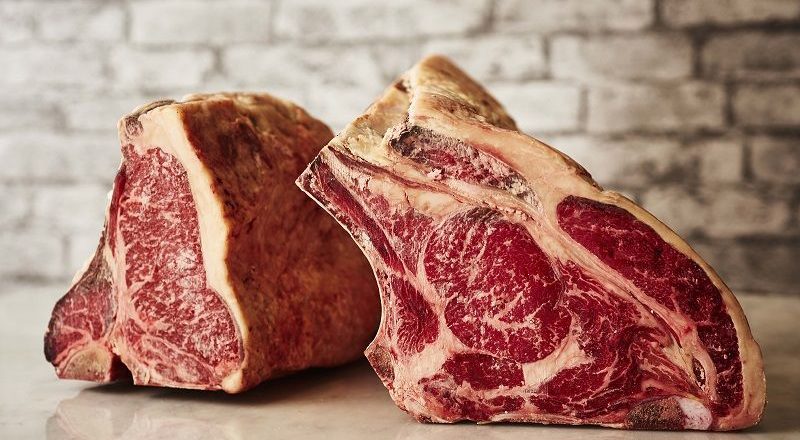
Good fats and bad fats: a clarification
What is the difference between saturated and unsaturated fats? Is it true that saturated fats are the “bad” ones? There is still a lot of confusion on the subject. Let us clarify based on new findings.
The division into saturated and unsaturated fats is based on their chemical structure that determines their fluidity, functionality, and different biological activities in the body. Unsaturated fats, aka “good” fats, can be monounsaturated (MUFA), very present in animal and vegetable fats. They also can be omega-6 – omega-3 polyunsaturated (PUFA) with anti-inflammatory action, with different beneficial effects on the cardiovascular system and the body in general.
Omega-3s can be short-chain, lower in biological activity, found in plant foods such as nuts, avocados, flaxseeds, and long-chain EPA and DHA, more important for healthy animal foods, meat, and fish. These fats are essential because our body cannot synthesize them, and we must introduce them through the diet. Our body can transform short-chain omega-3s into long-chain omega 3s, but this conversion is inefficient (less than 5%), making animal foods an indispensable source to meet its needs.
Recently CLA has been discovered, the Conjugated Linoleic Acid, a group of lipid compounds of the omega-6 group, found mainly in ruminant meat, with multiple beneficial properties: they fortify the immune system, increase metabolism and reduce cholesterol; therefore, they have slimming properties, but also antioxidants, antidiabetics, anti-arteriosclerosis and even anticancer. These positive effects on health are called nutraceuticals, along with other bioactive compounds found in fats, emphasizing the importance of not excluding these fundamental nutrients from the diet.
Meats are rich in these bioactive compounds. In addition, natural antioxidants are introduced via feeding of animals enriched in polyphenols coming from grazing and excellent silage with vitamin A and E, making the unsaturated animal fats stable and bringing nutraceutical value and defense towards ROS free radicals.
#Meats are rich in these #BioactiveCompounds, natural #antioxidants introduced via feeding of animals enriched in #polyphenols, and excellent silage with #vitaminA and E. Click To TweetSaturated fats, which are of animal origin as people believe, and of plant origin, are identified as “the bad fats”, but actually all kinds of fats are useful and have important functions, even cholesterol that people demonize try to avoid. The continuous searching for “light” foods, free from fats and cholesterol, can have negative consequences.
To meet the demands of consumers perceiving unsaturated fats as the most beneficial, marketing oriented towards this direction, reducing saturated fats and cholesterol in products, and increasing unsaturated fats. However, it is essential to be aware that the unsaturated MUFA and PUFA quickly face oxidation and rancidity, increasing pro-inflammatory substances, while saturated fats and cholesterol are more stable and have specific functions. So they must be included in a balanced diet.
The #brain is very rich in fat and #cholesterol, which coat nerves and #neurons and intervene in the nerve impulse transmission. Click To TweetTheir role is to provide energy. They constitute membrane phospholipids and the lining of cell membranes, of which cholesterol is an irreplaceable and vital component. The brain is very rich in fat and cholesterol, which coat nerves and neurons and intervene in the nerve impulse transmission and the transport and communication between cells. Cholesterol and fats also compose sex hormones, those of the immune system. They are metabolic regulators, intervening in vitamin D synthesis and the absorption of fat-soluble vitamins A, D, E, K.
Cholesterol is also divided into “good” HDL and “bad” LDL. Still, cholesterol is actually all the same, and what changes are the lipoproteins as the “means of transport”: HDLs help dispose of cholesterol in circulation. At the same time, LDL is responsible for its accumulation. Hence the simplification into “good” and “bad”, although recent studies show that the situation is more complex than people think and that LDL cholesterol is not the cause of cardiovascular diseases. Today, in fact, cardiologists agree that saturated and unsaturated fats are less harmful to heart health than is believed.
Click To TweetThe fats that are really dangerous and should be avoided are artificially modified trans fats, such as hydrogenated fats, unsaturated fats that have undergone heat treatment, and industrial transformations that make them harmful, such as vegetable margarine and commercial snacks. But as for natural fats, whether saturated, unsaturated, or cholesterol, they must be introduced with the diet, avoiding the two extreme conditions of excess and deficiency, ensuring the right balance that lies in their correct daily intake recommended to protect health.




